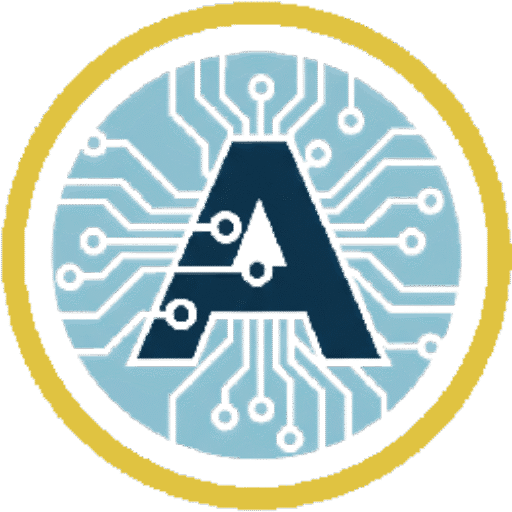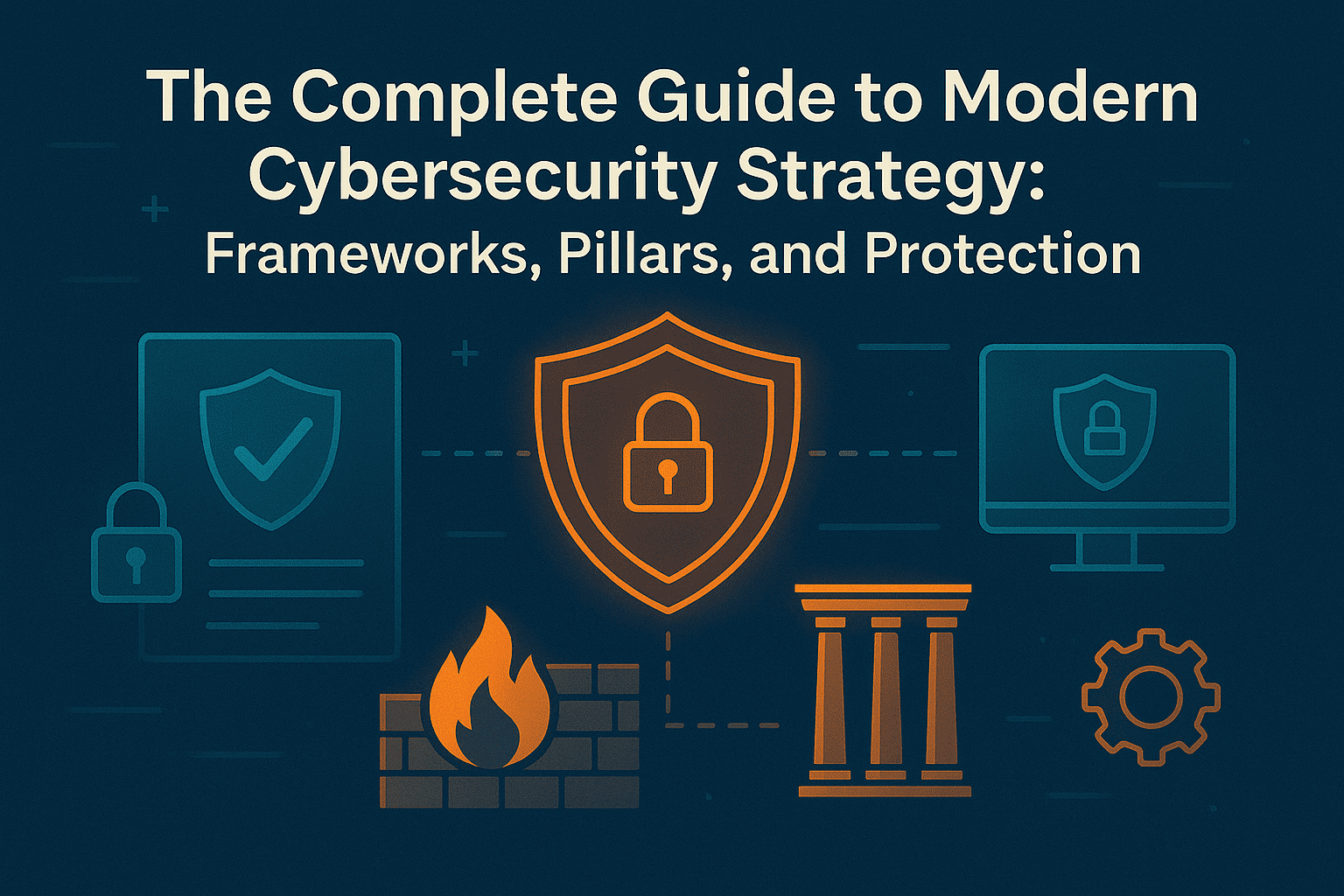Cybersecurity is no longer just an IT department concern; it’s a fundamental business risk and a core component of organizational governance. The complexity of modern networks—spanning cloud environments, remote workers, and interconnected services—requires a proactive, strategic approach guided by established frameworks. This guide breaks down the essential components of a modern cybersecurity strategy, from high-level governance to specific defense techniques.
Our focus is on strategic resilience: the ability not only to defend against attacks but to quickly detect, respond, and recover from them with minimal business impact.
1. What is Cybersecurity Strategy?
A Cybersecurity Strategy is a comprehensive, organization-wide plan that aligns security goals with business objectives. It defines the risk appetite, establishes clear security policies, and dictates the selection and implementation of protective measures.
Cybersecurity vs. IT Security
| Feature | Cybersecurity (Strategy) | IT Security (Tactics) |
| Focus | Protecting information assets wherever they reside (cloud, network, people). | Protecting the IT infrastructure (servers, applications, hardware). |
| Goal | Managing overall business risk and ensuring resilience. | Implementing specific controls (firewalls, patching, backups). |
| Scope | Business-wide, involving legal, HR, finance, and executive leadership. | Typically technical and contained within the IT/Security team. |
The goal of a modern strategy is to shift focus from merely prevention (trying to keep all threats out) to detection and response (assuming breaches will occur and minimizing the damage).
2. Governance and Risk Management Frameworks
The most effective cybersecurity strategies are built upon established, repeatable frameworks. These frameworks provide structure and a common language for managing risk across the entire organization.
The NIST Cybersecurity Framework (NIST CSF)
The NIST CSF (developed by the U.S. National Institute of Standards and Technology) is the gold standard for organizing and improving a cybersecurity program. It is flexible, non-prescriptive, and built around five core Functions that guide the full lifecycle of risk management.
| NIST CSF Function | Core Objective | Key Activities |
| 1. Identify | Develop an organizational understanding of managing cybersecurity risk to systems, assets, data, and capabilities. | Asset Management, Risk Assessment, Governance, Supply Chain Risk Management. |
| 2. Protect | Develop and implement safeguards to ensure the delivery of critical infrastructure services. | Access Control, Training, Data Security, Maintenance, Protective Technology. |
| 3. Detect | Develop and implement activities to identify the occurrence of a cybersecurity event. | Anomalies and Events Monitoring, Security Continuous Monitoring. |
| 4. Respond | Develop and implement activities to take action regarding a detected cybersecurity incident. | Response Planning, Communications, Analysis, Mitigation. |
| 5. Recover | Develop and implement activities to maintain plans for resilience and restore any impaired services. | Recovery Planning, Communications, Improvements. |
Using the NIST CSF allows organizations to establish a “current state” (their CSF Profile) and prioritize investments based on the desired “target state.”
ISO 27001
The ISO/IEC 27001 is an international standard that provides the requirements for an Information Security Management System (ISMS). Achieving ISO 27001 certification demonstrates a commitment to managing information security using a structured, auditable system. While NIST focuses on functions, ISO 27001 focuses on formal processes and documentation.
3. The Five Core Technical Pillars of Defense
A modern security program implements defensive measures across five key operational areas, forming the practical pillars of technical defense.
A. Network Security
This pillar focuses on controlling traffic and securing the digital perimeter, though that perimeter has become increasingly complex (e.g., hybrid environments).
- Next-Generation Firewalls (NGFWs): Inspect traffic beyond ports and protocols, using deep packet inspection to enforce application policies.
- Intrusion Prevention Systems (IPS): Actively analyze network traffic for malicious activity and automatically block threats.
- Micro-segmentation: Dividing the network into smaller, isolated zones to limit the lateral movement of an attacker, even if one segment is breached.
B. Endpoint Security
Endpoints (laptops, servers, mobile devices) are often the weakest link. This pillar looks at EDR vs EPP to ensure devices are protected regardless of location.
- Endpoint Protection Platforms (EPP): Traditional antivirus tools enhanced with cloud-based threat intelligence.
- Endpoint Detection and Response (EDR): Advanced tools that continuously monitor endpoint activity, record behavioral data, and enable rapid investigation and remediation of threats by security analysts. EDR is crucial for moving beyond simple prevention to robust detection and response.
C. Identity and Access Management (IAM)
The central control for who can access which resources and under what conditions.
- Multi-Factor Authentication (MFA): Requires users to verify their identity using two or more methods (e.g., password + mobile code), dramatically reducing the risk of credential compromise.
- Single Sign-On (SSO): Allows users to access multiple applications with one set of credentials, improving security and user experience.
- Privileged Access Management (PAM): Dedicated solutions to secure, manage, and monitor access for privileged accounts (e.g., administrators) which pose the highest risk.
D. Data Security and Privacy
This pillar focuses on protecting data throughout its lifecycle (at rest, in transit, and in use).
- Data Loss Prevention (DLP): Tools that monitor, detect, and block the unauthorized movement of sensitive data (like PII or credit card numbers) outside the organizational network.
- Encryption: The non-negotiable standard for protecting data, ensuring that if data is breached, it remains unreadable.
E. Security Operations (SecOps)
This is the operational engine that monitors, analyzes, and coordinates security efforts.
- Security Information and Event Management (SIEM): Aggregates and analyzes security alerts and log data from every source (network, endpoints, applications) to provide a centralized view of the security posture.
- Security Orchestration, Automation, and Response (SOAR): Tools that automate routine security tasks and coordinate incident response actions, speeding up mitigation time.
4. Modern Architectural Principles
Effective cybersecurity is woven into the network architecture, not bolted on afterward. These principles define modern defense philosophy.
Zero Trust Architecture
Zero Trust is a framework based on the principle: “Never trust, always verify.” It assumes no user or device—inside or outside the network perimeter—should be trusted by default. Access is granted only after verification of the user’s identity, device health, and the specific application being accessed. Zero Trust Architecture (ZTA) is the successor to the traditional perimeter defense model.
Cloud Security Posture Management (CSPM)
As organizations shift to the cloud, CSPM tools are necessary to continuously monitor cloud environments (AWS, Azure, GCP) for misconfigurations, policy violations, and compliance gaps. Misconfigurations are one of the leading causes of cloud data breaches.
5. Incident Response and Recovery
No defense is perfect. A mature cybersecurity strategy prioritizes the ability to handle a breach effectively, aligning with the NIST Respond and Recover functions.
The Incident Response Plan (IRP)
An IRP is a documented, practiced set of procedures that outlines the roles, responsibilities, and actions to be taken before, during, and after a security incident. A well-defined IRP is critical for containing damage and minimizing Time-to-Recover (TTR).
The Four Stages of Response
- Preparation: Training the team, setting up tools, and creating clear communication channels.
- Detection & Analysis: Confirming a security event is an actual incident, determining the scope, and containing the threat (e.g., isolating affected systems).
- Eradication & Recovery: Removing the root cause of the incident, restoring affected systems, and validating that the environment is clean.
- Post-Incident Activity: Reviewing the incident, identifying gaps, and implementing improvements to prevent recurrence.
Conclusion: The Continuous Cycle of Resilience
A modern cybersecurity strategy is not a static document but a continuous cycle of improvement, driven by the NIST CSF functions: Identify, Protect, Detect, Respond, and Recover.
By adopting recognized frameworks, embracing Zero Trust principles, and implementing robust tools like EDR and SIEM, organizations transform their security posture from reactive to resilient. This proactive governance approach ensures that cybersecurity becomes a strategic enabler of business objectives, securing customer trust and maintaining operational continuity in an era of relentless digital threats.
Would you like me to draft a meta description for this pillar page, or would you like to explore a specific cluster page topic related to one of the five NIST CSF functions?

